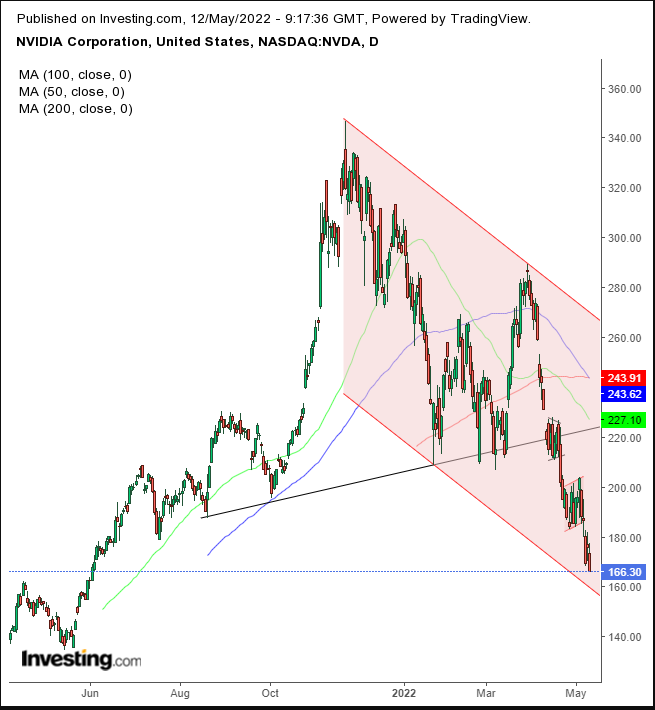Micron shares surge amid sharply higher revenue forecasts on AI-led memory demand
Two weeks ago, Intel (NASDAQ:INTC) CEO Pat Gelsinger predicted the computer chip industry would be under-supplied through 2024. Gelsinger blamed insufficient manufacturing equipment.
Last year semiconductor stocks outperformed the tech industry and achieved fresh records amid a supply crisis.
Given the delicate and complex production, the industry has always been supply-challenged. Chip production is expensive so producers only want to make exactly what is needed. Naturally, that has led to periodic shortages. However, COVID-19 lockdowns caused chipmakers to stop production entirely as they expected ultra-low demand.
And since coronavirus lockdowns have been lifted, consumerism has exploded, increasing insatiable demand, especially for cars that require computer chips.
Despite this, the semiconductors have not escaped the recent bear market in tech. The Philadelphia Semiconductor Index is down 31% from its Jan. 3 all-time high, while the NASDAQ 100 lost 28.6% since its Nov. 22 all-time high.
However, NVIDIA (NASDAQ:NVDA) is even worse for wear. Its share price is down 52.2% from its Nov. 22 all-time high.
Shares in the Santa Clara, California-based chipmaker sold off after being downgraded by Baird due to slowing demand amid an embargo by Russia. Also, tightening environmental regulations is a concern, as it may cause volatility in the industry. On top of all that, US politics will also play a vital role in the industry's fortunes, as Democrats and Republicans are trying to boost production.
So we think NVDA is on a path to $92.

The stock completed an Upward Sloping Head & Shoulders top. The right shoulder was higher due to demand strength amid the aforementioned supply crisis, as bulls attempted to raise the price. However, the price peaked on May 11, almost 20% below its record on Nov. 22.
As the price was crashing, the 50 DMA dived through a falling 200 DMA, triggering the most potent Death Cross. The 100 DMA dipped below the 200 DMA yesterday, forming a bearish formation: each MA is below a longer one, demonstrating weakening pricing. Since then, the stock completing back-to-back continuation patterns, the first to help traders complete the H&S and the second to deepen their penetration to the downside.
Note the perfect recent peaks and troughs establishing the downtrend fit into a Falling Channel, meaning the price could be ripe for a corrective rally.
On the weekly chart, this week's trading pushed the price below the 100 WMA, with a Falling Gap, after doing the same to the 50 WMA, just before completing the H&S top.
Trading Strategies
Conservative traders should wait for the price to retest at least the preceding Rising Flag pattern, if not the much larger H&S top, and wait for evidence of distribution—when considerable interest will slowly add to its supply.
Moderate traders could wait for a better entry, if not for confirmation, for the same return move.
Aggressive traders could enter a long contrarian position, counting on a return move that would bounce off the bottom of the Falling Channel, before joining more cautious traders with a short along with the downtrend. This is a risky move but may offer high reward.
Trade Sample - Aggressive Long Position
- Entry: $160
- Stop-Loss: $155
- Risk: $5
- Target: $185
- Reward: $25
Trade Sample - Follow Up Aggressive Short Position
- Entry: $185
- Stop-Loss $180
- Risk: $5
- Target: $95
- Reward: $90
- Risk-Reward Ratio: 1:18
